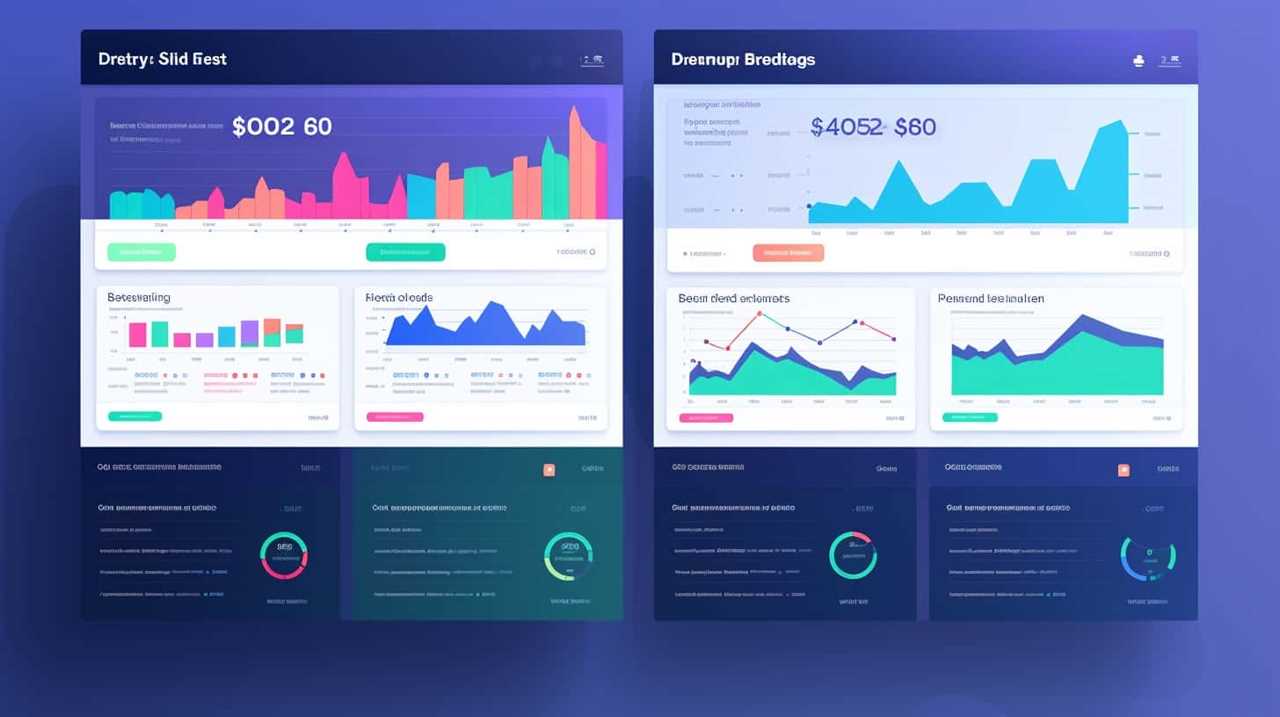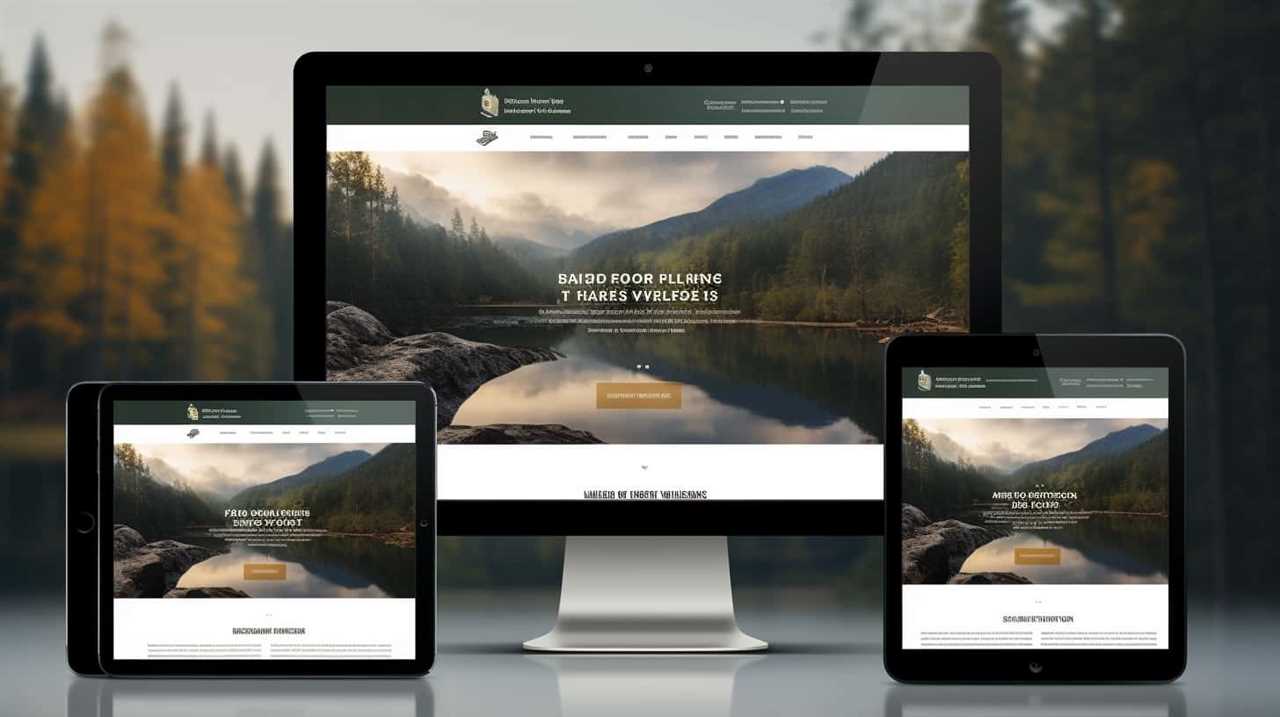Keyword Research
Elevating Quality: 15 Tips for Authoritative SEO Content

Seeking to boost your SEO content? Look no further! Discover 15 expert tips to elevate the quality and trustworthiness of your content.
From conducting thorough keyword research to optimizing your website for mobile devices, we’ll show you the ropes.
So, let’s dive in and start mastering the art of authoritative SEO content together.
Get ready to boost your rankings and attract more organic traffic with these tried-and-true techniques.

Key Takeaways
- Conduct thorough keyword research to identify relevant and high-ranking keywords for the target audience.
- Prioritize user’s needs and preferences when creating valuable and engaging content.
- Gain deep insights into the audience’s preferences and pain points to develop user-centric content strategies.
- Optimize content by incorporating relevant keywords naturally and using compelling headlines, authoritative outbound links, and descriptive alt text for images.
Conduct Thorough Keyword Research
First, we conduct thorough keyword research to ensure optimal SEO content by identifying the most relevant and high-ranking keywords for our target audience. Thorough keyword research is essential for achieving higher visibility in search engine rankings.
By analyzing search volume, competition, and relevance, we can identify the keywords that our audience is using to find information. This allows us to optimize our content and increase our chances of ranking higher in search results.
In addition to optimizing page titles and meta descriptions, keyword research also helps us understand the language and topics that resonate with our target audience. By incorporating these keywords strategically throughout our content, we can improve our website’s visibility and attract more organic traffic.
Optimize Your Page Titles and Meta Descriptions
When it comes to optimizing your page titles and meta descriptions, there are a few key points to keep in mind.

First, make sure your title tags are effective and accurately reflect the content of your page. This will help search engines understand what your page is about and rank it accordingly.
Second, craft captivating meta descriptions that entice users to click on your page in the search results. These concise summaries should accurately describe your content while also piquing curiosity.
Effective Title Tags
To optimize your page titles and meta descriptions, we should start by understanding the importance of effective title tags.
An effective headline is crucial for attracting readers and improving your website’s search engine ranking. When crafting your title tags, it’s essential to incorporate relevant keywords that align with your content and SEO strategies.

By including keywords in your title tags, search engines can better understand the context of your page, resulting in higher visibility for your website. Additionally, a well-optimized title tag can entice users to click on your link when it appears in search engine results.
To achieve this, keep your title tags concise, clear, and compelling. Remember, the goal is to grab the attention of your target audience and drive traffic to your website.
Captivating Meta Descriptions
Let’s dive into optimizing your page titles and meta descriptions with captivating meta descriptions that will boost your website’s search engine ranking.
Captivating storytelling is key to crafting meta descriptions that grab the attention of users and entice them to click on your website. A well-written meta description should be concise, informative, and include an enticing call to action.

It should provide a glimpse into the content of your page, while also sparking curiosity and creating a sense of urgency. By incorporating captivating storytelling and an enticing call to action in your meta descriptions, you can increase the chances of attracting more organic traffic to your website.
Focus on Creating Valuable and Engaging Content
When it comes to creating content that stands out, we need to focus on strategies that prioritize the user’s needs and preferences.
By adopting user-centric content strategies, we can ensure that our content is valuable and engaging to our audience.
This means understanding their pain points, providing solutions, and delivering information in a captivating way that keeps them coming back for more.

User-Centric Content Strategies
Our goal is to create highly valuable and engaging content that resonates with users and drives meaningful interactions. To achieve this, we employ user-centric content strategies that prioritize user centric design and user experience optimization.
Here are three key elements to consider when implementing these strategies:
- Research and understand your target audience: Gain deep insights into your audience’s preferences, interests, and pain points. This knowledge will enable you to create content that speaks directly to their needs and desires.
- Provide actionable and practical information: Users appreciate content that offers practical advice, step-by-step guides, and actionable tips. By providing valuable information that users can apply in their lives, you establish yourself as a trusted authority in your niche.
- Encourage interaction and feedback: Foster a sense of community and engagement by encouraging users to comment, share, and provide feedback on your content. This not only increases user engagement but also provides valuable insights and opportunities for improvement.
By implementing user-centric content strategies, you can create content that not only captivates your audience but also delivers real value and drives meaningful interactions.
In the following section, we’ll explore how to further captivate your audience with compelling content.

Captivating Audience With Content
To continue our exploration of captivating the audience with content, we can delve into the importance of creating valuable and engaging content that truly resonates with readers.
Captivating storytelling is a powerful tool that can grab the attention of your audience and keep them engaged from start to finish. By incorporating compelling narratives, interesting anecdotes, and relatable examples, you can create a connection with your readers that goes beyond mere information-sharing.
Audience engagement is key in today’s digital landscape, where attention spans are shorter than ever. To ensure your content is truly captivating, focus on providing value to your readers by addressing their pain points, offering practical solutions, and delivering insights that they can apply in their own lives. By doing so, you can build trust, foster loyalty, and establish yourself as an authoritative voice in your industry.
Now, let’s dive into the next section about how to use header tags to structure your content.

Use Header Tags to Structure Your Content
Header tags are essential for structuring content, allowing us to organize information and enhance its readability for both users and search engines. When used effectively, header tags offer several benefits that contribute to the overall quality and performance of our SEO content.
Here are three key advantages of using header tags:
- Improved Readability: By using header tags to break up our content into sections and subsections, we make it easier for readers to scan and understand the main points of our article or webpage.
- Enhanced SEO: Search engines rely on header tags to understand the structure and hierarchy of our content. By using proper header tags (H1, H2, H3, etc.), we can signal the importance of different sections and help search engines index our content more accurately.
- User Experience: Well-structured content with clear headings and subheadings enhances the user experience by providing a logical flow and making it easier for users to navigate and find relevant information.
Incorporate Relevant Keywords Naturally Throughout Your Content
When incorporating relevant keywords naturally throughout our content, it’s important to maintain a seamless integration that enhances the overall quality and performance of our SEO efforts. Keyword placement plays a crucial role in optimizing our content for search engines and attracting organic traffic.
By strategically placing keywords in our headlines, subheadings, and body paragraphs, we can ensure that our content is relevant and valuable to our target audience. However, it’s essential to avoid overusing keywords or forcing them into our content unnaturally. Instead, focus on organic keyword integration that flows naturally within the context of the article.

This approach not only helps improve our search engine rankings but also enhances the readability and user experience of our content.
Now, let’s move on to the next section and learn how to write compelling and click-worthy headlines.
Write Compelling and Click-Worthy Headlines
As we continue our discussion on optimizing SEO content, let’s explore the importance of crafting compelling and click-worthy headlines. Improving headline effectiveness is crucial for driving traffic and increasing engagement on your website.
To help you craft enticing titles, here are three essential tips:

- Be Specific: Clearly communicate what your content offers and why it’s valuable. Use numbers, statistics, or intriguing facts to grab readers’ attention.
- Use Power Words: Words like ‘ultimate,’ ‘essential,’ or ‘proven’ evoke curiosity and create a sense of urgency. Incorporate strong adjectives and verbs to make your headlines more persuasive.
- Optimize for SEO: Include relevant keywords in your headlines to improve search engine visibility. However, ensure that your titles remain natural and reader-friendly.
Crafting compelling and click-worthy headlines is an art that can significantly impact your content’s success. By implementing these tips, you can increase your click-through rates and engage your audience right from the start.
Include High-Quality and Authoritative Outbound Links
Including high-quality and authoritative outbound links enhances the credibility and reliability of your SEO content. By linking to high authority sources, you’re providing valuable information to your readers and establishing your content as trustworthy and well-researched.
When selecting outbound links, prioritize reputable websites and publications that have a strong reputation in your industry. These high authority sources won’t only add value to your content, but they’ll also help improve your website’s search engine rankings.
Additionally, incorporating link building strategies into your content can help increase your website’s visibility and organic traffic. By linking to relevant and authoritative sources, you’re signaling to search engines that your content is valuable and deserving of higher rankings.

Remember to use anchor text that accurately describes the content you’re linking to and avoid overusing outbound links, as this can be seen as spammy and negatively impact your SEO efforts.
Optimize Your Images With Descriptive Alt Text
To enhance the optimization of your images, utilize descriptive alt text that accurately describes the content of the image. Incorporating image optimization techniques is crucial for improving your website’s SEO.
Here are three reasons why alt text is important in SEO:
- Accessibility: Alt text provides a text alternative to visually impaired users who rely on screen readers. By describing the image, you ensure that everyone can understand the content, regardless of their abilities.
- Search engine indexing: Alt text helps search engines understand the context and relevance of the image. By using descriptive keywords in the alt text, you increase the chances of your images appearing in relevant search results.
- User experience: Alt text enhances the overall user experience by providing additional context and information about the image. This can lead to higher engagement and improved user satisfaction.
By optimizing your images with descriptive alt text, you not only improve accessibility and user experience but also boost your website’s SEO.

Now let’s move on to the next section, where we’ll discuss how to improve your website’s loading speed.
Improve Your Website’s Loading Speed
To enhance your website’s performance, we recommend optimizing its loading speed. A slow-loading website not only frustrates users but also negatively impacts SEO rankings.
To improve loading speed, start by minimizing HTTP requests, such as reducing the number of scripts and external resources. Compressing images and using lazy loading techniques can also significantly speed up your site. Additionally, ensure your website is hosted on a reliable server with sufficient bandwidth.
Implement caching to store static files and reduce server load. Furthermore, optimizing the code by minifying and combining CSS and JavaScript files can help improve loading speed. It’s also important to regularly monitor and remove any unnecessary plugins or extensions that may slow down your website.

Make Your Content Easy to Read and Scan
After optimizing your website’s loading speed, it’s now time to focus on making your content easy to read and scan. Improving readability and enhancing user experience are key factors in keeping your audience engaged and interested.
Here are three tips to help you achieve this:
- Use clear and concise headings: Break your content into sections with descriptive headings that make it easy for readers to navigate and understand the structure of your article.
- Utilize bullet points and numbered lists: Bullet points and numbered lists help to organize information and make it more scannable. They also provide a visual break from long paragraphs, making your content easier to digest.
- Incorporate white space: Avoid cluttering your content with too much text. Leave ample white space between paragraphs and sections to give your readers’ eyes a break and make the content visually appealing.
Optimize Your URLs for Search Engines
Now that we have enhanced the readability and user experience of our content, let’s delve into how we can optimize our URLs for search engines. URL structure optimization is one of the SEO best practices for URLs that can greatly impact your website’s visibility and ranking. When it comes to optimizing your URLs, there are a few key factors to consider:
| Factor | Description |
|---|---|
| Keep it concise | Short and simple URLs are easier for both users and search engines to understand and remember. |
| Include keywords | Incorporate relevant keywords in your URLs to help search engines understand the content of a page. |
| Use hyphens | Separate words in your URLs with hyphens instead of underscores or spaces for better readability. |
| Avoid unnecessary words | Remove any unnecessary words, such as articles or conjunctions, from your URLs. |
| Ensure readability | Make sure your URLs are readable and make sense to both search engines and users. |
Encourage Social Sharing and Engagement
Encouraging social sharing and engagement is vital for boosting online visibility, amplifying audience reach, and fostering community interaction. By providing valuable, shareable content, we can inspire our audience to spread the word and engage with our brand.

Through active participation in social media platforms, we can cultivate a loyal community that not only interacts with our content but also becomes advocates for our brand.
Boosting Online Visibility
We actively promote social sharing and engagement to enhance online visibility. By encouraging users to share our content on social media platforms, we can increase the reach and visibility of our website.
Here are three strategies we employ to boost online visibility:
- Creating shareable content: We focus on producing high-quality, valuable content that resonates with our target audience. By creating content that’s informative, entertaining, or thought-provoking, we increase the likelihood of it being shared and reaching a wider audience.
- Engaging with our audience: We actively respond to comments, messages, and mentions on social media. By engaging with our audience, we build relationships, establish credibility, and encourage further sharing of our content.
- Leveraging influencers: We collaborate with influencers and thought leaders in our industry to amplify our reach. By leveraging their existing audience and credibility, we can increase the visibility of our content and attract more organic traffic to our website.
Amplifying Audience Reach
To expand our audience reach and foster engagement, we actively promote social sharing and interaction with our authoritative SEO content. By encouraging social sharing, we aim to amplify brand awareness and increase website traffic.

One effective strategy we employ is incorporating social sharing buttons on our content, making it easy for readers to share our articles on various social media platforms.
Additionally, we create compelling and shareable content that resonates with our target audience. This includes using eye-catching visuals, crafting attention-grabbing headlines, and providing valuable information that’s relevant and useful.
We also actively engage with our audience by responding to comments, asking questions, and initiating discussions.
Fostering Community Interaction
To foster community interaction and encourage social sharing and engagement, we actively promote the sharing of our authoritative SEO content through various social media platforms. By building a strong online community, we create a space where individuals can engage with our content and share their thoughts and opinions.

Here are three ways we foster community interaction:
- Encouraging discussion: We initiate conversations by posing questions or asking for feedback in our content. This encourages our audience to leave comments and engage with one another.
- Hosting interactive events: We organize webinars, live Q&A sessions, and online workshops to provide opportunities for our community to connect with us and each other in real-time.
- Recognizing and featuring user-generated content: We showcase content created by our community members, such as testimonials, reviews, or guest blog posts. This not only fosters engagement but also strengthens the sense of community ownership.
Utilize Internal Linking to Improve Website Navigation
By incorporating internal linking, we can enhance website navigation and improve the user experience. Internal linking refers to the practice of linking one page of a website to another page within the same website.
It allows users to easily navigate through different sections and pages, making it easier for them to find the information they’re looking for. Additionally, internal linking helps search engines understand the structure and hierarchy of your website, leading to better indexing and improved visibility in search results.
Optimize Your Website for Mobile Devices
How can we enhance the mobile experience of our website?

Optimizing our website for mobile devices is crucial in today’s digital landscape. Here are three key steps to achieve mobile optimization:
- Implement responsive design: Responsive design ensures that our website adapts to different screen sizes and resolutions, providing an optimal user experience across all devices. This includes adjusting font sizes, images, and layouts to fit smaller screens without sacrificing functionality.
- Optimize page load speed: Mobile users expect fast-loading websites. We can achieve this by minimizing file sizes, leveraging caching techniques, and optimizing code. Compressing images and using lazy loading can also significantly improve mobile page load speed.
- Simplify navigation and interactions: Mobile users have limited screen space and may be operating with one hand. Simplify navigation menus, minimize the number of clicks required to access information, and use touch-friendly buttons and gestures.
Regularly Update and Maintain Your Content
After optimizing our website for mobile devices, it’s important for us to regularly update and maintain our content to ensure its continued relevance and effectiveness. Content maintenance is crucial for achieving high search engine rankings and engaging our audience.
Regularly refreshing our content helps to keep it up-to-date and valuable for our readers. This involves reviewing and improving existing content, as well as creating new content to address emerging trends and topics.
By regularly updating our content, we demonstrate our commitment to providing accurate and timely information to our audience. Additionally, content maintenance helps search engines recognize our website as a reliable source of information, improving our chances of ranking higher in search results.

Ultimately, investing time and effort into content refreshment will contribute to the long-term success of our website.
Frequently Asked Questions
How Can I Conduct Thorough Keyword Research?
When conducting thorough keyword research, we emphasize the importance of long tail keywords and utilizing keyword research tools. These strategies allow us to optimize our content and reach our target audience effectively.
What Are Some Tips for Optimizing Page Titles and Meta Descriptions?
Crafting compelling meta descriptions and optimizing SEO titles are essential for effective content. We’ll share tips on how to captivate your audience and improve your search engine rankings.
How Can I Create Valuable and Engaging Content?
Creating valuable and engaging content involves effective storytelling and incorporating multimedia elements. By captivating your audience with compelling narratives and visually appealing media, you can provide a mastery-level experience that keeps them coming back for more.

What Is the Purpose of Header Tags and How Should They Be Used?
Header tags serve a crucial purpose in optimizing SEO content. They organize and structure the webpage, making it easier for search engines to understand the content. By following best practices, such as using relevant keywords, header tags can greatly enhance the visibility and authority of your website.
How Can I Optimize My Images With Descriptive Alt Text?
We can optimize our images by using descriptive alt text. This helps search engines understand the content of our images and improves accessibility for visually impaired users. Alt text best practices include being concise and accurately describing the image.
Conclusion
Well, we’ve reached the end of our SEO content journey. We’ve learned the importance of thorough keyword research, optimizing page titles, and creating valuable content.
But hey, who needs all that, right? I mean, who wants to rank higher on search engines and drive more traffic to their website? Certainly not you.

So go ahead, ignore these tips, and watch your online presence dwindle away. It’s your choice, after all.
Keyword Research
How to Do Keyword Research on Semrush

Are you prepared to become an expert in keyword research using Semrush? We’ve got all the resources you need!
In this article, we’ll guide you through the process of setting up your Semrush account.
We’ll also help you understand its powerful keyword research features and how to conduct initial research.
Additionally, we’ll show you how to analyze keyword metrics and competition, refine your keyword list, and implement your findings.

Get ready to take your SEO strategy to the next level with Semrush!
Key Takeaways
- Sign up for a Semrush account and set up your website details
- Connect your Google Analytics and Google Search Console accounts to Semrush
- Utilize Semrush’s keyword research tools for content optimization and focus on long tail keywords
- Analyze competitors’ keyword strategies to refine your own approach and gain a competitive edge
Setting up Your Semrush Account
First, we’ll guide you through the process of setting up our Semrush account.
When exploring Semrush’s account management features, it’s crucial to understand how to maximize the benefits of its keyword tracking capabilities.
Setting up your Semrush account is a straightforward process. After signing up, you’ll be prompted to enter your website’s details and connect your Google Analytics and Google Search Console accounts. This allows Semrush to gather data about your website’s performance and keywords.

Once you’ve completed these steps, you can start exploring Semrush’s account management features, such as tracking your organic search positions, monitoring your competitors, and analyzing your website’s overall visibility.
Understanding Semrush’s account management features will lay the foundation for effectively utilizing its keyword tracking capabilities in the subsequent section about ‘Understanding Semrush’s Keyword Research Features’.
Understanding Semrush’s Keyword Research Features
Continuing our exploration of Semrush’s account management features, let’s delve into understanding Semrush’s keyword research capabilities.
When it comes to optimizing your content for search engines, Semrush’s keyword research tools are invaluable. Here are three key features to help you make the most of your keyword research:

- Content optimization: Semrush’s keyword research tools provide insights into the keywords your target audience is searching for. This allows you to optimize your content to align with their search intent and increase your chances of ranking higher in search engine results pages.
- Long tail keywords: Semrush’s keyword research emphasizes the importance of long tail keywords. These longer and more specific phrases have lower competition and higher conversion rates, making them a crucial element in your SEO strategy.
- Competitor analysis: Semrush’s keyword research allows you to analyze your competitors’ keyword strategies. By identifying the keywords they’re targeting, you can gain valuable insights and refine your own keyword strategy to outperform them.
Understanding and leveraging Semrush’s keyword research tools will give you a competitive edge in optimizing your content and driving organic traffic to your website.
Conducting Initial Keyword Research
Now, let’s delve into how we can conduct our initial keyword research on Semrush.
When it comes to finding relevant keywords, there are a few effective strategies we can employ. One of them is focusing on long tail keywords, which are more specific and have lower competition. By targeting these keywords, we can attract highly targeted traffic to our website.
Additionally, utilizing competitor analysis for keyword research can provide valuable insights into the keywords that are driving traffic to our competitors’ websites. This information can help us identify untapped opportunities and optimize our own content.

By employing these strategies, we can lay the foundation for a successful keyword research campaign.
In the next section, we’ll discuss how to analyze keyword metrics and competition to further refine our keyword selection and strategy.
Analyzing Keyword Metrics and Competition
To further refine our keyword selection and strategy, we can analyze keyword metrics and competition on Semrush. This step is crucial in choosing the right keywords for your SEO strategy.
By analyzing keyword difficulty and search volume, we can better target our audience and increase our chances of ranking higher in search engine results.

Here are three key factors to consider when analyzing keyword metrics and competition:
- Keyword Difficulty: This metric helps us understand how challenging it will be to rank for a specific keyword. A higher difficulty score indicates stronger competition, while a lower score suggests a better chance of ranking.
- Search Volume: This metric shows how many people are searching for a particular keyword. It helps us identify popular keywords with a higher potential for driving traffic to our website.
- Competitor Analysis: By examining the competition for our chosen keywords, we can gain insights into their strategies, strengths, and weaknesses. This information allows us to refine our own approach and find gaps in the market.
Analyzing these metrics and competition will help us make informed decisions about the keywords to target, ultimately improving our SEO strategy.
Refining Your Keyword List and Implementing Your Findings
After analyzing keyword metrics and competition on Semrush, we refine our keyword list and implement our findings.
Refining our keyword list involves removing irrelevant keywords and focusing on those with high potential for driving organic traffic. We also identify long-tail keywords, which have lower competition and higher conversion rates.

Implementing keyword optimization strategies is crucial for maximizing organic traffic growth. This includes incorporating targeted keywords into website content, meta tags, and URLs. It’s also important to optimize on-page elements such as headings, image alt tags, and internal links.
Additionally, monitoring keyword rankings and making necessary adjustments is essential for staying ahead of the competition.
Frequently Asked Questions
Can I Use Semrush for Keyword Research on Platforms Other Than Google?
Yes, you can use Semrush for keyword research on social media platforms and e-commerce platforms. It provides valuable insights and data to help you optimize your keyword strategy across different platforms.
How Often Should I Update My Keyword List?
We update our keyword list regularly to ensure we stay up to date with search trends and maximize the benefits of our research. The frequency of updating the keyword list depends on the dynamic nature of our industry.

Can I Track the Performance of My Keywords Over Time?
Yes, we can track the performance of our keywords over time. It is important to track keyword rankings to understand how our SEO efforts are impacting search visibility and to make informed optimization decisions.
Are There Any Alternative Tools to Semrush for Keyword Research?
There are several alternative keyword research tools available that can be used for keyword research. It is important to compare these tools and consider their pros and cons before making a decision.
How Can I Find Long-Tail Keywords Using Semrush?
Finding long-tail keywords on Semrush helps us unlock the benefits of using them in SEO. By optimizing our content with these specific keywords, we can attract targeted traffic and improve our search rankings. Here are some tips for optimizing content with long-tail keywords.
Conclusion
In conclusion, conducting keyword research on Semrush is crucial for optimizing your website’s visibility and driving organic traffic.

By setting up your account, exploring the platform’s features, and analyzing keyword metrics and competition, you can refine your keyword list and implement effective strategies.
Remember, success lies in finding the right keywords that resonate with your target audience and align with your business goals.
So, start your research journey on Semrush and unlock the potential for online success.
Keyword Research
How to Do Keyword Research With Google

In our pursuit of digital dominance, grasping the significance of keywords is crucial. These concise yet powerful words are essential for online achievement. So, what’s the optimal way to take advantage of this opportunity?
Fear not, for we have Google by our side. With its Keyword Planner, we can uncover valuable keyword ideas. And with Google Trends, we can analyze competition.
Together, let’s embark on a journey of keyword research using the tools at our disposal.
Key Takeaways
- Keyword research helps identify relevant and high-performing keywords for a website.
- Long tail keywords target specific niche markets and attract a focused audience.
- Google Keyword Planner provides comprehensive keyword suggestions based on search volume, competition, and relevance.
- Google Trends provides insights on search volume and keyword trends over time.
Understanding the Importance of Keyword Research
Keyword research is an essential step in our digital marketing strategy as it helps us identify the most relevant and high-performing keywords for our website.

One of the benefits of long tail keywords in keyword research is their ability to target specific niche markets. By including more specific and descriptive phrases in our content, we can attract a more focused audience that’s more likely to convert.
Additionally, long tail keywords often have less competition, making it easier for our website to rank higher in search engine results.
Another crucial aspect of keyword research is understanding keyword intent. By analyzing the intent behind a user’s search query, we can optimize our website and content to align with their needs and preferences.
This not only improves our search engine rankings but also increases the chances of attracting qualified traffic to our website.

Using Google Keyword Planner for Keyword Ideas
We frequently rely on Google Keyword Planner to generate a multitude of keyword ideas for our digital marketing strategy. Here’s why it’s our go-to tool:
- Comprehensive keyword suggestions:
Google Keyword Planner provides a vast array of keyword ideas based on search volume, competition, and relevance. This allows us to explore a wide range of options and identify the most effective keywords for our campaigns. - Comparison with other tools:
One of the key advantages of Google Keyword Planner is its ability to compare keyword data with other tools. This feature helps us gain valuable insights and make informed decisions when selecting the right keywords for our targeting. - Long tail keyword targeting:
Google Keyword Planner also helps us identify long tail keywords, which are specific and highly targeted phrases. Using long tail keywords allows us to reach a more niche audience, resulting in better conversion rates and higher ROI.
Analyzing Keyword Competition With Google Trends
To assess keyword competition, we turn to Google Trends for valuable insights and data-driven analysis. Google Trends allows us to analyze search volume and identify keyword trends over time.
By entering a keyword or a group of keywords into Google Trends, we can see how their popularity has changed over the years and even compare different keywords to see which one is more popular. This information helps us understand the level of competition for a particular keyword and make informed decisions in our keyword research.
Utilizing Google Search Console for Keyword Insights
By leveraging the insights provided by Google Trends, we can now delve into the benefits of utilizing Google Search Console for valuable keyword insights.

Here are three key reasons why Google Search Console is an essential tool for advanced keyword research techniques:
- Performance Data: Google Search Console provides detailed performance data for your website, including the keywords that are driving organic traffic. This data allows you to identify high-performing keywords and optimize your content accordingly.
- Search Queries: With Google Search Console, you can see the exact search queries that users are entering to find your website. This information helps you understand user intent and refine your keyword targeting.
- Click-Through Rate (CTR) Analysis: Google Search Console provides CTR data for your website’s organic search results. By analyzing your CTR for different keywords, you can identify opportunities to improve your meta tags and increase your organic click-through rate.
Best Practices for Conducting Keyword Research With Google
Now let’s explore the best practices for conducting keyword research with Google and how it can enhance our understanding of user intent and drive organic traffic to our website.
When it comes to keyword research strategies for small businesses, it’s important to start by identifying relevant keywords that align with your target audience and business goals. Use tools like Google Keyword Planner or other keyword research tools to find high-volume, low-competition keywords.
Once you have a list of keywords, incorporate them strategically into your website content. Tips for optimizing website content with targeted keywords include placing them in the page title, meta description, headings, and throughout the body of the content. Remember to write naturally and provide valuable information to the users.

Regularly analyze and update your keyword strategy to stay ahead of the competition and drive more organic traffic to your website.
Frequently Asked Questions
How Can I Use Keyword Research to Improve My Website’s Search Engine Rankings?
To improve our website’s search engine rankings, we can use keyword research to optimize our content and implement the findings for on-page SEO improvements. It’s crucial for mastering search engine optimization.
Are There Any Alternative Tools or Platforms I Can Use for Keyword Research Besides Google Keyword Planner?
There are several alternative keyword research tools and platforms available, which can provide additional benefits when used alongside Google Keyword Planner. Using multiple tools allows for comprehensive and thorough keyword research.
Can I Use Google Trends to Analyze the Competition for Long-Tail Keywords?
Using Google Trends for competitor analysis is a great way to find profitable long-tail keywords. It allows us to see the popularity and seasonality of keywords, helping us make data-driven decisions for our keyword research.

How Can I Leverage the Data From Google Search Console to Enhance My Keyword Research Strategy?
To optimize our keyword research strategy, we can leverage the data from Google Search Console. It provides valuable insights into search queries, impressions, and CTR, helping us identify high-performing keywords and improve our content.
Are There Any Common Mistakes to Avoid When Conducting Keyword Research Using Google?
When it comes to keyword research, we’ve all made mistakes. But fear not! We’ll show you how to avoid common pitfalls and master the art of keyword research. Let’s dive in!
Conclusion
In the vast forest of online content, keyword research acts as our compass, guiding us to the hidden treasures of search engine visibility. Just as explorers rely on maps to navigate uncharted territories, we rely on Google’s tools to uncover valuable keywords.
With the power of Google Keyword Planner, Google Trends, and Google Search Console, we can analyze competition, gain insights, and optimize our content for success.

So, let’s embark on this digital quest armed with knowledge and make our mark in the online realm.
Keyword Research
How to Do Keyword Research

The advantages of incorporating long-tail keywords into content marketing approaches.
Are you ready to unlock the secrets of successful keyword research? We’ve got you covered.
In this article, we’ll guide you through the process step by step, helping you uncover the most valuable keywords for your target audience.
From brainstorming ideas to analyzing competition, we’ll show you how to refine your keyword list for maximum impact.

Get ready to take your SEO strategy to the next level and dominate the search engine rankings.
Let’s dive in and master keyword research together.
Key Takeaways
- Keyword research helps understand the language and phrases used by the target audience.
- Focusing on long tail keywords attracts more qualified traffic.
- Local SEO allows targeting customers in specific geographical areas.
- Keyword research helps identify popular search terms.
Understanding the Importance of Keyword Research
Keyword research is crucial for our online success. It helps us understand the language and phrases our target audience uses when searching for information, products, or services online. Two important aspects of keyword research are the role of long tail keywords and the impact of local SEO.
Long tail keywords play a significant role in keyword research. These are longer, more specific phrases that are less competitive but highly targeted. By focusing on long tail keywords, we can attract more qualified traffic to our website, increasing the chances of conversion.

Local SEO also has a profound impact on keyword research. Optimizing our website for local search helps us target customers in specific geographical areas. It allows us to tailor our keywords to include location-specific terms, making it easier for local customers to find us.
Understanding the importance of long tail keywords and the impact of local SEO is essential for effective keyword research and ultimately, our online success.
Defining Your Target Audience and Goals
To effectively conduct keyword research, we must first define our target audience and establish our goals. Understanding your audience’s search intent is crucial in identifying the keywords they’re likely to use when searching online. This will help us create content that aligns with their needs and interests. Additionally, setting realistic goals is essential to measure the success of our keyword research efforts.
Here are four steps to help us define our target audience and goals:

- Conduct market research to identify our target audience’s demographics, interests, and online behavior.
- Analyze competitor websites and social media platforms to understand what keywords they’re targeting.
- Use tools like Google Analytics and social media analytics to gain insights into our audience’s search queries and engagement patterns.
- Clearly define our goals, whether it’s increasing website traffic, generating leads, or improving search engine rankings.
Generating Keyword Ideas
Now that we’ve defined our target audience and established our goals, let’s dive into generating keyword ideas.
Brainstorming techniques are a great way to come up with a wide range of keywords that could potentially attract our target audience. A brainstorming session can involve listing related terms, thinking about different aspects of our product or service, and considering the pain points or needs of our audience.
Additionally, conducting niche keyword research can help us identify specific keywords that are relevant to our industry or market segment. By focusing on these niche keywords, we can narrow down our keyword list to be more targeted and effective.
In the next section, we’ll discuss how to analyze keyword competition and volume, which will further refine our keyword selection process.

Analyzing Keyword Competition and Volume
Now, let’s delve into how we analyze the competition and volume of keywords to further refine our keyword selection process.
To effectively analyze keyword competition and volume, we follow these steps:
- Analyzing keyword trends: We examine the search trends of specific keywords to understand their popularity over time. This helps us identify which keywords are currently in demand and can guide our content creation strategy.
- Identifying high-value keywords: We look for keywords with a high search volume and low competition. These keywords have the potential to drive significant traffic to our website and attract more potential customers.
- Competitor analysis: We analyze the keywords that our competitors are targeting. This gives us insights into their keyword strategy and helps us identify opportunities to outperform them in search engine rankings.
- Keyword difficulty assessment: We evaluate the difficulty of ranking for specific keywords by considering factors such as domain authority, backlink profile, and content quality of the top-ranking pages. This helps us prioritize our keyword targeting efforts.
Refining Your Keyword List for Maximum Impact
After analyzing keyword competition and volume, we can now focus on refining our keyword list for maximum impact. Keyword optimization techniques are essential to ensure that our website ranks higher in search engine results and attracts relevant traffic.
One effective strategy is to use long tail keywords effectively. These are longer and more specific phrases that target niche audiences and have lower competition. By incorporating long tail keywords into our content, we can attract more qualified leads and increase conversion rates.

Additionally, refining our keyword list allows us to prioritize the most relevant and high-performing keywords. This helps us create targeted and compelling content that resonates with our audience and improves our overall SEO strategy.
Frequently Asked Questions
How Can I Determine the Search Volume and Competition for Specific Keywords?
To determine search volume and competition for specific keywords, we use search volume determination and competition analysis. It helps us understand the popularity and competitiveness of keywords, allowing us to make informed decisions for our keyword research strategy.
Are There Any Tools Available to Help With Keyword Research?
There are various tools available to assist with keyword research. These tools can provide valuable insights into search volume and competition, allowing us to optimize our content effectively. Using the best practices for keyword research is crucial for success.
How Do I Identify Long-Tail Keywords and Why Are They Important?
Identifying long-tail keywords is crucial for effective SEO. They are specific, less competitive, and have a higher conversion rate. Incorporating long-tail keywords in content marketing strategies improves search visibility and drives targeted traffic to your website.

Can I Use Competitor Analysis to Improve My Keyword Research?
Yes, competitor analysis can greatly enhance our keyword research. By analyzing our competitors, we can uncover untapped keyword opportunities and leverage their keyword data to create strategic and engaging content.
What Is the Significance of Local Keyword Targeting and How Can I Incorporate It Into My Research?
Local keyword targeting is crucial for optimizing our website for local search. Incorporating local SEO in keyword research helps us reach a targeted audience and improve our visibility in specific geographic areas.
Conclusion
In conclusion, conducting effective keyword research is crucial for achieving maximum impact in your online presence.
By understanding the importance of keyword research and defining your target audience and goals, you can generate relevant keyword ideas.

Analyzing keyword competition and volume helps you refine your keyword list strategically.
Remember, the key to success lies in finding the right keywords that resonate with your audience and drive organic traffic to your website.
So, stay strategic and start your keyword journey today!
-

 Expert Content Authority2 weeks ago
Expert Content Authority2 weeks agoThe Pillar of SEO: Why Content Consistency Matters Most
-

 Learning Center2 weeks ago
Learning Center2 weeks agoUncover How To Use ChatGPT to Write Effective Ad Copy
-

 Learning Center1 week ago
Learning Center1 week agoAI in 2024: 10 Things We are NOT Looking Forward To
-

 Holistic SEO3 weeks ago
Holistic SEO3 weeks agoHolistic Local SEO Tactics for Small Businesses
-

 Learning Center2 weeks ago
Learning Center2 weeks agoOptimize Your Digital Experience with Akamai CDN
-

 Learning Center3 weeks ago
Learning Center3 weeks agoExperience How GPT-4 Turbo Beats Claude 2: A Review
-

 Learning Center3 weeks ago
Learning Center3 weeks agoMastering SEO through the Google SGE Lens: A Comprehensive Guide
-

 Holistic SEO2 weeks ago
Holistic SEO2 weeks agoMaximize Engagement with YouTube Videos End Screens














